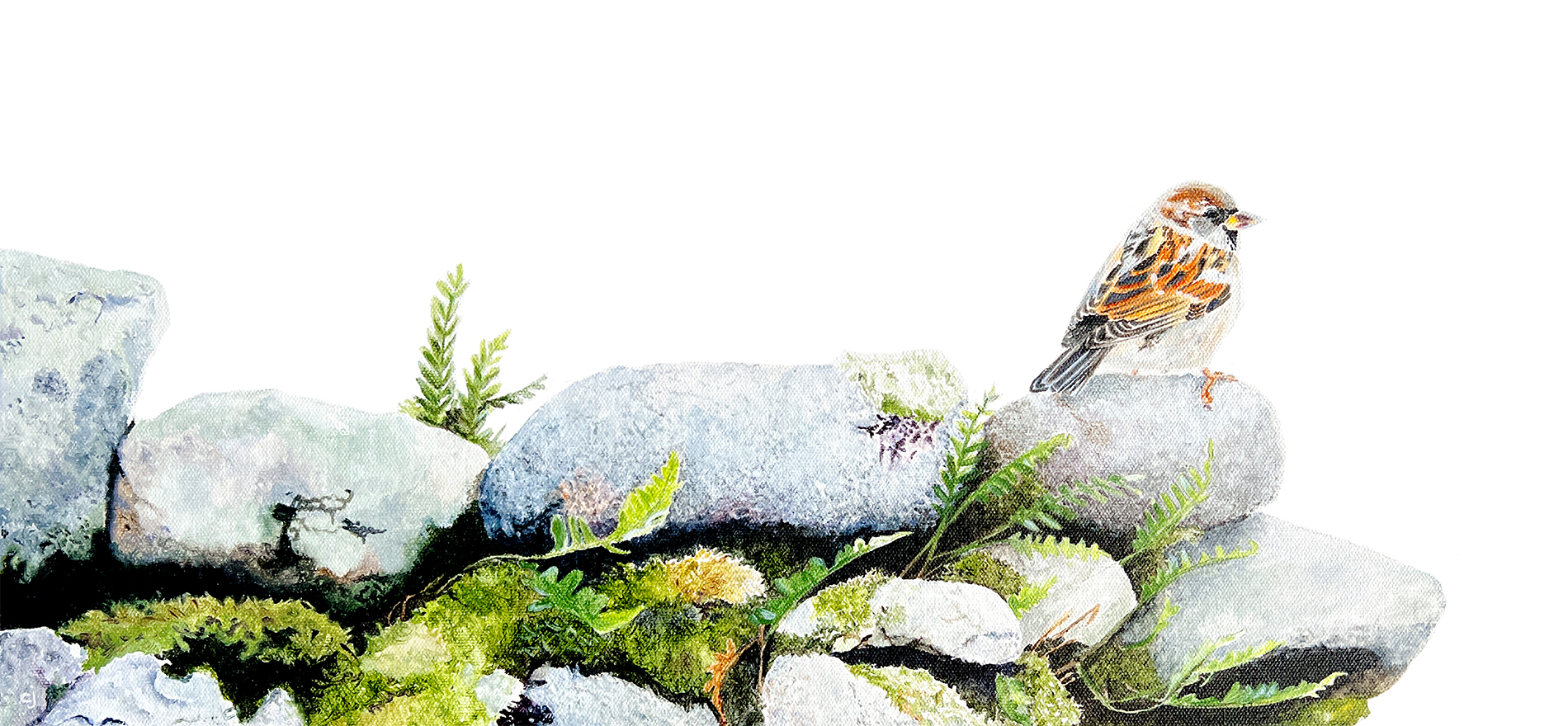Robert Frost wrote, “Something there is that doesn’t love a wall” – the opening line to his poem, “Mending Wall.” (1914)
I learned to appreciate non-rhyming poetry in the seventh grade from Mrs. Lindgren. She was a wonderful literature teacher that took her time to expose her unruly class to a variety of styles of prose.
What intrigued me about Frost’s work was that sometimes his words were deceitful or maybe a better term is tricky.
The line most quoted from “Mending Wall” is: “Good fences make good neighbors.” I’m sure I’ve quoted it myself. It’s a strong message indicating there is a clear need to create barriers between you and your neighbor to keep a peaceful or amicable relationship.
It’s a tactic I employ daily moving to and from my apartment complex. I nod, am polite and say, “Hi” (more if they have a dog). I know I’m not alone in this behavior.
The speaker in the poem doesn’t know the purpose of the wall – they have no cattle to contain; one side has apple orchards and the other side has pine trees. Yet, he and his neighbor meet each spring to replace the stones that have fallen from the fence throughout the year.
Why the stones have fallen is also unknown. A few theories are proposed: frost heaves or hunters after game. The message is clear: Nature doesn’t want walls and human nature doesn’t respect walls.
The speaker of the poem confides in us: “Before I built a wall I’d ask to know What I was walling in or walling out, And to whom I was like to give offense.”
Walling Out
There are tons of examples of walls being built as a defense tactic: castles and cities with massive walls for protection. But the walls themselves were never enough to keep invaders out – the walls had to be protected. We know archers manned walls and boiling oil was poured down on people attempting to scale walls.
The Great Wall of China was a massive undertaking: 13,000 miles of wall were constructed in northern China around 220 B.C. to protect the people from barbarian nomads. They say that some 400,000 people died during the construction of the wall and their bodies were buried within the construction.
According to History.com the wall was built “as a psychological representation of the barrier maintained by the Chinese state to repel foreign influence and exert control over its citizens.”
A section of the wall was rebuilt in the late 1950’s and attracts thousands of national and foreign tourists each day. When you think about it, a structure that was designed to maintain a barrier between its citizens and foreigners is now a vehicle to bring them together… it’s funny.
The Berlin Wall was built by the German Democratic Republic during the Cold War to prevent its population from escaping Soviet-controlled East Berlin to West Berlin, which was controlled by the major Western Allies.
The Berlin Wall was not one wall, but two. Measuring 96 miles long and 13 feet tall, these walls were separated by a heavily guarded, mined corridor of land known as the ‘death strip’.
It was under the constant surveillance of armed East German border guards who were authorized to shoot anyone attempting to escape into West Berlin. By 1989, the Wall was lined with 302 watchtowers. More than 100 people died trying to cross the Berlin Wall over the course of its 28-year history. But the Wall was just one part of the larger ‘inner German border’ that separated East and West Germany, and hundreds more were killed trying to cross other fortified border points.
I was a kid of the 70’s, we grew up worrying about the Cold War; we had air raid drills in school, a ridiculous practice that would never have saved any of us. (Makes me think of the active shooter drills that are being deployed now.)
Mr. Gorbachev, tear down this wall!
—Ronald Reagan, address at the Brandenburg Gate, June 12, 1987
I remember hearing the echos of the Reagan speech but it wasn’t until the evening of November 9, 1989 that the wall finally came down. Again, hundreds of lives lost, a wall that wasn’t wanted and didn’t work.
Despite these sorts of historic examples, walls are still suggested as a means to control the movement of people.
The most recent example would be the proposed, started and scrapped wall between the US and Mexico. When it was proposed the estimate was in the ballpark of $21.6 billion (yes BILLION) and take 3.5 years to construct.
The current dividing line between the two nations consists of open spaces, rivers, mountains and various barriers of different shapes, sizes and materials ranging from low fences to high steel slats interspersed with checkpoints and pedestrian crossings. The total expanse is 1,900 miles; from the Pacific Ocean to the southern tip of Texas and currently, there is only 700 miles with a physical fence.
The people that want the wall are loud. Over the years there have been many reasons for the wall: drug activity and worry the migration of undocumented immigrants to the US and the possibility jobs will be taken from legal citizens.
Yet, “something is that doesn’t love a wall” – in 2022 a tunnel was found under the border wall between Tijuana and San Diego. 1/3 mile long, 4 feet wide and 6 stories deep! That seems like a case of: “where there’s a will, there’s a way” kind of activity.
Just recently there was an article in the Washington post citing economists estimate the closed borders and Covid were responsible for close to half of the 3.5 million workers missing from the labor force. 10 million jobs remain unfilled in the low-paying and physically demanding industries of hospitality, agriculture, construction and health care. Anecdotally, we are hearing increased instances of a lack of yard workers, roofers and house cleaners available. It seems that the U.S. citizenry just don’t want those jobs.
What I can’t quite fathom is that we knew the Berlin Wall was bad – it was stopping people from seeking asylum from the control of the Soviet regime and our then republican president called for the wall to come down….and yet, the current republican party thinks that a wall is necessary to keep Mexicans and South Americans from seeking the same asylum. It makes you think it’s entirely racially motivated.
The painting
When I started the painting I was thinking more of personal boundaries: those lines we draw between ourselves and others for protection, whether it’s physical or emotional.
There is a lot of talk about healthy boundaries these days and subsequently about people who push our boundaries.
Something there is that doesn’t love a wall
It seems to me that we think of walls as something that protects us, they give us privacy from prying eyes and they offer us a physical barrier that gives us a sense of control. We control our pets, our kids and control who can and can’t come on our property.
So, where does the difference lie? Is it in the scope of the size of the wall? My boundaries that protect myself are OK. My walls that protect my property and privacy are OK. Public walls that try to control myself and other people are not. Is it solely perspective?
This begs the question, “Why can’t people just be respectful of others?” If the world showed people respect, would we need walls?
The bird on the wall is reflective, but it knows that with it’s wings, it has the freedom to fly over walls when necessary.
MENDING WALL
Something there is that doesn’t love a wall,
That sends the frozen-ground-swell under it,
And spills the upper boulders in the sun;
And makes gaps even two can pass abreast.
The work of hunters is another thing:
I have come after them and made repair
Where they have left not one stone on a stone,
But they would have the rabbit out of hiding,
To please the yelping dogs. The gaps I mean,
No one has seen them made or heard them made,
But at spring mending-time we find them there.
I let my neighbor know beyond the hill;
And on a day we meet to walk the line
And set the wall between us once again.
We keep the wall between us as we go.
To each the boulders that have fallen to each.
And some are loaves and some so nearly balls
We have to use a spell to make them balance:
‘Stay where you are until our backs are turned!’
We wear our fingers rough with handling them.
Oh, just another kind of out-door game,
One on a side. It comes to little more:
There where it is we do not need the wall:
He is all pine and I am apple orchard.
My apple trees will never get across
And eat the cones under his pines, I tell him.
He only says, ‘Good fences make good neighbors.’
Spring is the mischief in me, and I wonder
If I could put a notion in his head:
‘Why do they make good neighbors? Isn’t it
Where there are cows? But here there are no cows.
Before I built a wall I’d ask to know
What I was walling in or walling out,
And to whom I was like to give offense.
Something there is that doesn’t love a wall,
That wants it down.’ I could say ‘Elves’ to him,
But it’s not elves exactly, and I’d rather
He said it for himself. I see him there
Bringing a stone grasped firmly by the top
In each hand, like an old-stone savage armed.
He moves in darkness as it seems to me,
Not of woods only and the shade of trees.
He will not go behind his father’s saying,
And he likes having thought of it so well
He says again, ‘Good fences make good neighbors.’
Robert Frost





